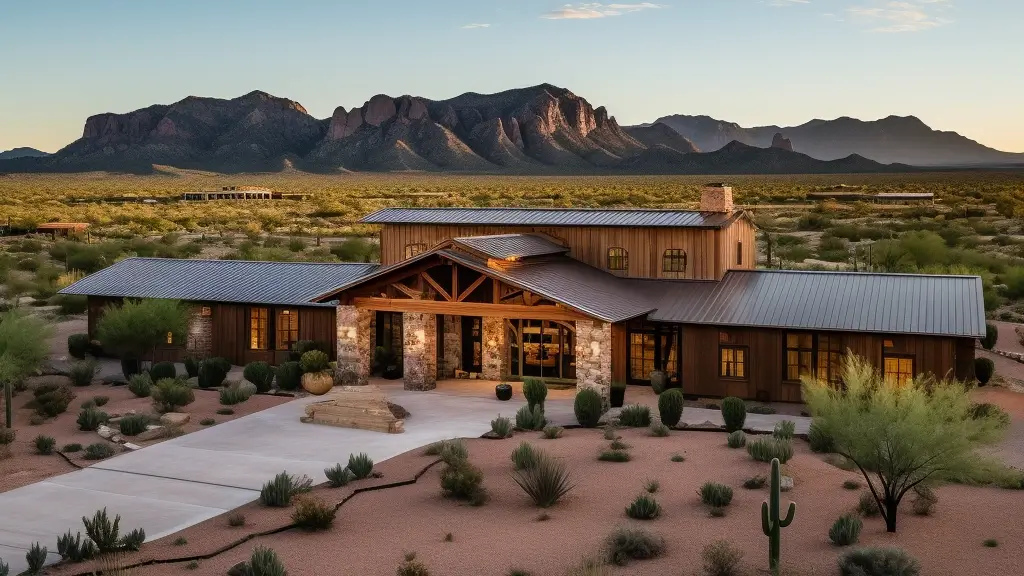Barndominiums Vs. Typical Homes: a Comprehensive Comparison of Way Of Life and Functionality
The decision in between barndominiums and typical homes encompasses numerous variables, consisting of way of living preferences and practical needs. Barndominiums are characterized by their open layouts and flexibility, often appealing to those who prioritize communal living and flexibility.
Overview of Barndominiums
Barndominiums, a novel housing fad getting popularity across various regions, blend the rustic appeal of barn-style design with the performance of contemporary living spaces. These unique structures typically include a metal or timber framework, integrating open flooring strategies and high ceilings with energy-efficient features. Often located on expansive rural homes, barndominiums provide homeowners the possibility to enjoy a serene way of living while offering sufficient area for various tasks.
The adaptability of barndominiums extends past their visual appeal; they can act as both living quarters and useful spaces for pastimes, workshops, and even local business. Their adaptive layout permits very easy personalization, fitting varied household needs and preferences. Numerous proprietors value the low upkeep demands connected with metal exterior siding and roof, adding to long-term longevity.

Features of Standard Houses
Highlighting classic design and comfort, traditional homes are defined by their unique building styles, which often reflect historical impacts and local looks. Typical attributes consist of balanced facades, gabled roofings, and a focus on workmanship, causing a warm and inviting environment.
Conventional homes commonly integrate aspects such as crown molding, wainscoting, and wood flooring, enhancing their timeless charm. They typically feature several areas with specified purposes, advertising household interaction while permitting privacy. read more. The design commonly includes official living and dining locations, which are conducive to entertaining guests and organizing household celebrations
Outside products such as brick, timber, or stone are frequently made use of, adding to sturdiness and a feeling of durability. Barndominium repair. In addition, many conventional homes are created with front verandas or stoops, fostering a sense of area and connection with the neighborhood
Landscape design plays a considerable role in standard home design, with well-kept gardens and paths that enhance curb allure - website. Overall, typical homes symbolize a sense of nostalgia and stability, attracting those that value heritage and a more structured living setting
Expense Contrast
Usually, a cost contrast between barndominiums and traditional homes exposes significant distinctions in building costs and total financial investment. Barndominiums, commonly constructed from metal or steel frameworks, commonly incur reduced material and labor expenses than conventional homes built from wood and brick. The streamlined design of barndominiums can convert to decreased construction times, even more decreasing labor prices and speeding up tenancy.
Usually, the price per square foot for a barndominium varies from $100 to $150, while conventional homes can vary extensively, commonly falling in between $150 and $300 per square foot, depending on place, products, and style complexity. This cost difference makes barndominiums an attractive choice for budget-conscious purchasers looking for larger living rooms without giving up top quality.
Additionally, barndominiums may cause long-term savings with lower upkeep expenses, power performance, and insurance coverage rates. Their resilient building and construction materials usually require less upkeep gradually compared to conventional homes. It is important to take into consideration that while preliminary costs may be reduced for barndominiums, the final investment will certainly additionally depend on private modification and preferred services, which can influence navigate here the total cost in both housing types.
Lifestyle and Area Factors To Consider
When considering lifestyle and room, barndominiums offer an unique adaptability that interest a range of house owners. These hybrid structures integrate property coping with useful space, usually including open flooring plans that can be adjusted to match specific demands. This versatility is particularly advantageous for families or individuals looking for a personalized living atmosphere, enabling varied uses such as office, workshops, or leisure locations.

Furthermore, the aesthetic appeal of barndominiums can accommodate both rustic and modern preferences, making them a functional selection for different layout choices (Barndominium builder). Ultimately, the selection between a barndominium and a conventional home frequently rests on how well each alternative straightens with the house owner's way of living desires and spatial needs, highlighting the value of taking into consideration individual priorities in the decision-making process
Ecological Impact and Sustainability
The environmental effect and sustainability of barndominiums present compelling advantages contrasted to standard homes. Mostly created from steel and various other resilient products, barndominiums are commonly constructed using recycled resources, lowering the demand for new products and minimizing waste. Their style generally highlights open areas, which can bring about lower energy usage for heating and cooling compared to typical homes with more segmented formats.
In addition, barndominiums can include lasting attributes such as photovoltaic panels, rain harvesting systems, and advanced insulation techniques, boosting their power effectiveness. The adaptability of their style allows property owners to integrate these modern technologies extra effortlessly than in many conventional homes, which might need extensive retrofitting.
Furthermore, barndominiums typically need fewer resources for construction due to their easier, much more efficient styles (click here). Generally, barndominiums represent a forward-thinking method to lasting living, lining up with modern environmental concerns.
Conclusion
In summary, the choice in between barndominiums and typical homes hinges on specific way of life choices and functional needs. Barndominiums, with their open formats and lasting products, cater to those seeking adaptability and common living.